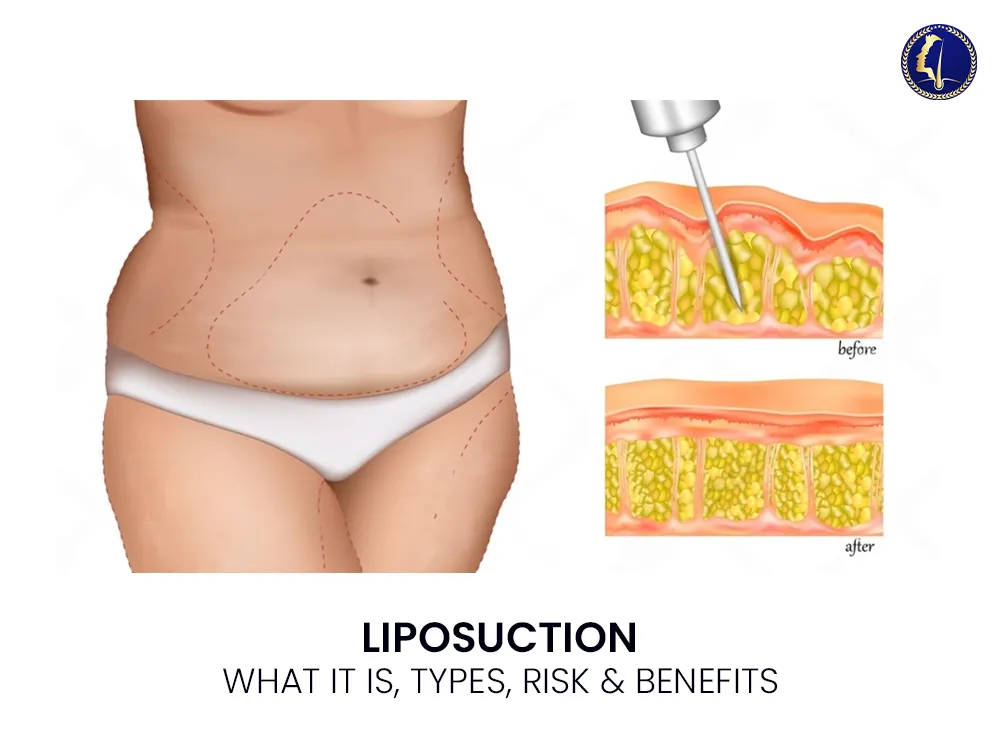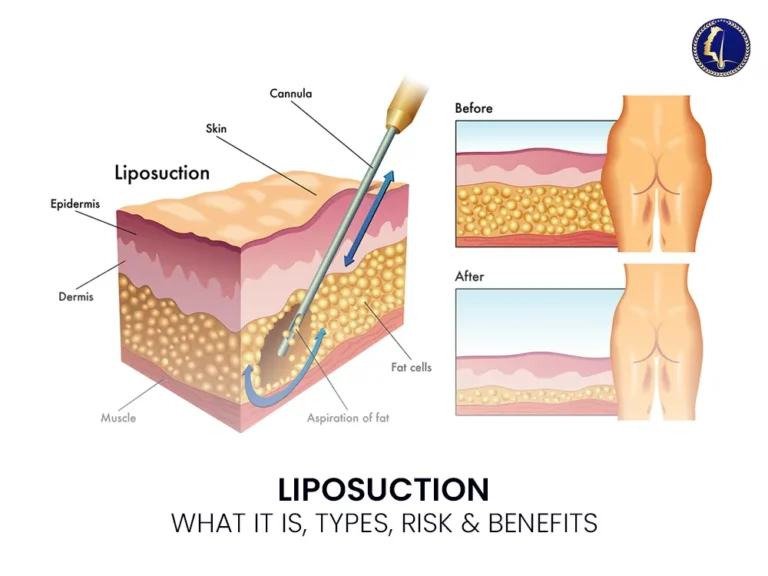Liposuction
Liposuction, also known as lipoplasty, liposculpture, or simply “lipo,” is a cosmetic surgical procedure that removes excess fat deposits from specific areas of the body. It is commonly performed to contour and reshape body areas resistant to diet and exercise. While it is not a weight-loss method, liposuction can enhance body proportions and improve overall aesthetics.
How Liposuction Works

Liposuction involves the use of a thin, hollow tube called a cannula, which is inserted through small incisions in the skin. The surgeon uses suction to remove fat cells, sculpting the targeted area. Various techniques are used to optimize results, minimize recovery time, and reduce risks.
Types of Liposuction Techniques
Tumescent Liposuction – The most common method, involving the injection of a saline solution containing anesthetic and epinephrine to reduce bleeding and swelling before fat removal.
Ultrasound-Assisted Liposuction (UAL) – Uses ultrasonic waves to liquefy fat before removal, making it easier to extract, especially in fibrous areas.
Laser-Assisted Liposuction (LAL) – Employs laser energy to break down fat cells, leading to smoother results and skin tightening benefits.
Power-Assisted Liposuction (PAL) – Utilizes a mechanized cannula to facilitate fat removal with less effort and increased precision.
VASER Liposuction – A minimally invasive technique using ultrasound technology to target and emulsify fat cells while preserving surrounding tissues.
Areas Commonly Treated with Liposuction
Abdomen and waist
Thighs and hips
Arms and back
Buttocks
Chin and neck
Calves and ankles
Benefits of Liposuction
Enhanced body contours and proportions
Permanent fat removal (if a stable weight is maintained)
Boost in self-confidence and body image
Can treat lipomas (benign fatty tumors) and gynecomastia (excess male breast tissue)
Risks and Considerations
Although liposuction is generally safe when performed by a qualified surgeon, potential risks include:
Infection
Bruising and swelling
Irregular contours or asymmetry
Loose skin or scarring
Numbness or nerve damage
Fluid accumulation (seromas)
A thorough consultation with a board-certified plastic surgeon is crucial to determine eligibility, discuss expectations, and assess possible complications.
Liposuction Recovery and Aftercare
Recovery varies based on the extent of the procedure and individual healing responses. Most patients experience swelling, bruising, and mild discomfort, which can be managed with pain medication and compression garments. Light activity is encouraged, but strenuous exercise should be avoided for at least 4-6 weeks.
5 Frequently Asked Questions (FAQs) About Liposuction
1. Who is a good candidate for liposuction? Liposuction is best suited for individuals who are close to their ideal weight but struggle with localized fat deposits. Good skin elasticity and overall health are also important factors for successful results.
2. How much fat can be removed with liposuction? The amount of fat removed depends on body type and safety considerations. Typically, surgeons remove 2-5 liters of fat per session. Removing excessive amounts can increase risks and lead to complications.
3. Will liposuction help with weight loss? No, liposuction is not a weight-loss procedure. It is designed for body contouring rather than significant weight reduction. Patients are encouraged to maintain a healthy lifestyle post-surgery.
4. Are the results of liposuction permanent? Fat cells removed during liposuction do not regenerate; however, remaining fat cells can expand with weight gain. A stable weight and a balanced diet are key to maintaining long-term results.
5. What is the difference between liposuction and a tummy tuck? Liposuction removes fat, while a tummy tuck (abdominoplasty) removes excess skin and tightens abdominal muscles. Patients with loose skin or significant sagging may benefit more from a tummy tuck combined with liposuction.
Conclusion
Liposuction is an effective procedure for body contouring, offering long-lasting results for those who maintain a healthy lifestyle. Consulting a qualified plastic surgeon ensures the best approach tailored to individual needs and goals. If you’re considering liposuction, research thoroughly and prioritize safety for a successful and satisfying outcome.

